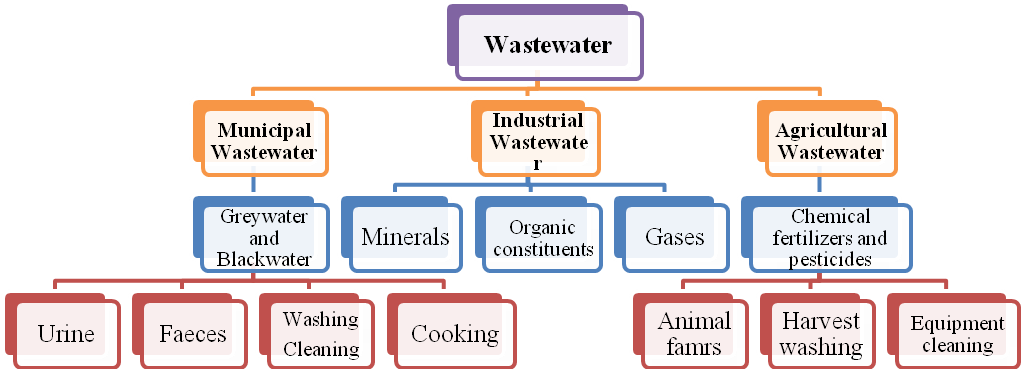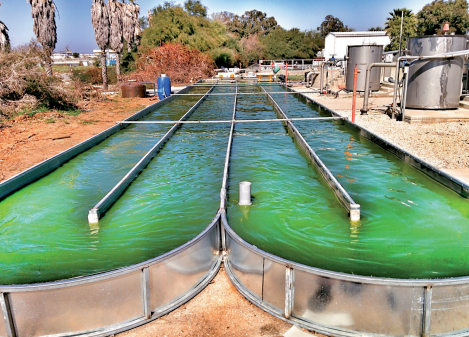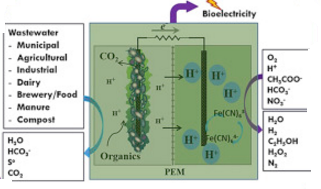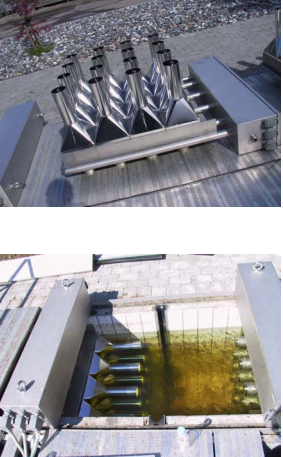Executive Summary
In this report, attention is paid to new technologies that have been recently introduced in the field of wastewater treatment and management. Today, the world undergoes numerous changes and improvements at the same time. It is hard to guess if an action is taken in order to protect the environment or cause some harm. Still, people continue making attempts and introducing new ideas and approaches on how to deal with harm or solve organizational challenges. This report introduces four crucial technologies with the help of which people can manage waste that is found in water and contaminates the environment. These technologies are membrane filtration, nano-absorption, microbial fuel cells, and APOP. The method that is used to discuss these technologies is a systematic review of the recent scholarly articles and reports where the authors share their observations and opinions. Besides, the report is supported by some statistical data in order to underline the urgency of the problem and the necessity to continue discussions at different levels. The identification of these techniques proves that people recognize their mistakes and try to correct them in order not to destroy their lives. The analysis of the technologies and their comparison in regard to price, size, accessibility, and the quality of waste removal is offered at the end of the report. This comparison helps the representatives of different countries to comprehend if they are ready to implement the chosen technique or not.
Introduction
Nowadays, wastewater treatment and management are two crucial aspects for consideration in different spheres of life. Politics try to promote special programs and laws in order to protect citizens against the harms of water waste. Technicians develop new technologies with the help of which wastewater control may be possible. Ecologists and environmentalists believe that their discussions and approaches can guide people. In fact, wastewater treatment is a complicated process that consists of a number of physical, chemical, biological, economic, and social operations with the help of which the removal of water waste in different regions is possible (“Wastewater Treatment”).
However, it is also necessary to remember that wastewater treatment is the issue every community has to solve regardless of its geographical location but remembering about the generation of sewage that usually comes from people’s homes, organizations, industries, and other premises. It is hard to say which type of sewage is more critical, generated by domestic properties, or generated by industry. The recent technological progress and the economic development of many countries promote people’s possibilities to use, create, and distribute more new products that lead to the increased volumes of sewage and the necessity to treat and manage wastewater properly. In other words, new solutions are required because of new problems continue appearing.
Purpose
The main purpose of this technical report is to explore new technologies that may be used to improve wastewater treatment and management. However, in order to achieve this goal, it is necessary to explain the essence of wastewater, discuss the threats of sewage for ordinary people and the environment, and investigate treatment and management details thoroughly. The point is that many traditional methods of wastewater treatment are challenged nowadays because of such factors as rapid population growth, increased industrial activities, and the development of new contaminants that cannot be controlled with the help of old technologies.
Plan of Report Development
There are several stages in this technical report that have to be taken into consideration:
- The provision of an environmental background that raises the importance of the development of the technical background for understanding a topic;
- A brief identification of traditional technologies for wastewater treatment and management;
- An explanation of modern technological, environmental, and economic needs of populations;
- The description of the current situation that makes people think about new technologies for wastewater treatment and management regarding the latest statistical data;
- The introduction and discussion of the technologies that support wastewater treatment and management in different parts of the world;
- Final evaluations and possible recommendations on how to improve the field of wastewater treatment and management.
In general, the work on this technical report requires combining the peculiar features of environmental engineering with global economic aspects and recent technological issues with the help of which it is possible to change wastewater treatment and management.
Background
Water Waste and Importance of Treatment and Management
Many researchers discuss the importance of sustainability in the management of different water resources and waste that is connected with people’s everyday activities and industrial operations (Libralato et al. 61). Unfortunately, it is not always possible even for the best technicians to achieve good results because the environment continues suffering from deficient waste treatment plants or the inability to promote effective sanitation and clean water supply (Libralato et al. 61). The provision of clean water in order to meet human needs turns out to be a real challenge for many industries in the 21st century (Qu et al. 3932).
For a long period of time, water remains to be one of the most crucial and interchangeable substances for human existence, as well as the existence of other beings on earth (Qu et al. 3931). Despite the achievements in different spheres of life, approximately 780 million people cannot have direct access to appropriate drinking sources (Qu et al. 3931), the citizens of developing countries suffer from approximately 70% of industrial waste being untreated properly, and more than 2 million tons of human waste is found in waste every day (“Statistics”).
One of the main goals of wastewater treatment is to help people deal with their domestic and industrial effluents and avoid the threats to their health or environmental damage (“Waste Treatment”). As a rule, in wastewater management, the lack of such management may have a direct negative impact on the biological diversity of the existing ecosystems and the work of life support systems. People have to understand how to deal with their own progress and use it for their good but not for the creation of new challenges and threats.
Wastewater Variety in the Modern World
People have to deal with different types of waste. At the same time, they have to comprehend the main sources where such waste comes from. In Figure 1, the main types of wastewater and its sources are mentioned. Municipal, industrial, and agricultural wastewater varies considerably and may have different effects on people and the conditions under which they have to live. Sometimes, people may control their activities and prevent negative outcomes by decreasing waste in water and using some filters and other technologies. Each type of waste has its own ratings and characteristics. As a rule, waste in each group may have a different color, smell, and even the condition.

Variety of Technologies in Wastewater Management
Today, people have access to numerous biological, chemical, natural, and physical methods in order to treat and manage wastewater. Wastewater engineering is an important profession that makes people develop new methods, identify the standards, and make the choices in order to improve the environment (van Loosdrecht et al. 2). Applications of nanotechnology are also possible in the forms of adsorption, membranes processes, or photo analysis (Qu et al. 3933). The biological contributions are also applicable in case people want to use algae in order to facilitate the purification process and conserve energy. The process of such a method may be observed in Figure 2.

Conventional wastewater processes help to remove chemical and microbial contaminants that may influence the quality of human life. Still, its effectiveness turns out to be limited because new challenges occur regularly, and new technologies cannot be offered at the same speed. People cannot recognize the change in their needs, and manufacturers fail to consider the connection between public demand and water pollution. Therefore, it is necessary to observe what improvements have been already offered to lower the number of contaminant levels in the water, remove nutrients, and synthesize the compounds that may have an impact on public health and the environment.
Discussion
The goal of this technical report is to investigate what new technologies are offered in the field of wastewater treatment and management. To succeed in the development of such kind of work, it is necessary to choose an appropriate method, to introduce the findings, and to develop the required portion of analysis in order to clarify if the chosen topic may be properly enlightened. In this section, the choice of methods will be clarified, the results of findings will be described and introduced in a table format, and the analysis of the technologies will be given in order to clarify if the latest achievements are effective for the environment and the improvement of human life.
Methods
In this paper, the evaluation of scholarly literature, the investigation of recent reports, and the consideration of statistical facts will be developed. The systematic review is the research method within the frames of which it is possible to collect and analyze different studies and reports and develop the conclusions regarding the facts gathered. It is possible to use qualitative and quantitative data in order to cover the required topic. In developed and developing countries, many new technologies have been already offered. Some of them have been already checked and estimated, and some of them still required deep analysis and clarifications. This method of work differs from an ordinary literature review due to the possibility to develop own interpretations and make suggestions in order to strengthen the chosen position or find out the alternatives that could be offered. Environmental pollution is a global topic for discussions, and people from different parts of the world are ready to share their positions and suggest the ideas with the help of which wastewater treatment and management may be considerably improved. Therefore, it is also possible to communicate with people and gather their opinions about the quality of water they use and the steps they take to prevent water contamination or reduce the number of waste in the water.
Findings
Taking into consideration the opinions of people and their possibilities to impact the protection of the environment, there are many attempts made by ordinary people to reduce the challenges of wastewater treatment and management. For example, people decide to install special filters and membranes to protect their sewage and create an effective treatment plant. Nowadays, many organizations try to integrate new systems for recycling water and different waste material that can be found in water in order to meet consumer demands and promote the protection of the environment.
Membrane Filtration
In this project, the attention to four main technologies is paid. Wastewater treatment aims at reducing the number of pollutants in the process. These operations are crucial for urban population and the water systems used because they help to protect people and improve the systems which control the use of water in everyday activities. In many developed countries, membrane filtration system is used because it is less expensive and easy to use (Libralato et al. 67). The investigation shows that membrane filtration is one of the essential systems that undergoes considerable improvements and changes in order to be the most frequently used by people. It is based on advanced water reclamation.
The filtration process is when water is passed through a certain medium with fine pores which are about 0.1 mm (Gupta et al. 6381). With the help of such technologies, it is possible to remove suspended solids, oils, and greases that may change the structure of water and cause the environmental pollution. Though this technology is not new, filtration is the system that is characterized by regular changes and the exchange of membranes with different cartridges which help to reduce waste in water up to 99% (Gupta et al. 6381). Nowadays, membrane bioreactor filtration technology is available to people to decrease industrial and municipal waste.
Nano-Absorbents
Another achievement in the field of wastewater treatment is based on the latest nanotechnological improvements. The peculiar feature of this approach is the possibility to merge with other technologies and endorse the chosen direction. Nanomaterials are defined as smaller than 100 nm in one dimension (Qu et al. 3932). One of the current discoveries in the chosen sphere is the usage of nano-absorbents as the possibility to remove organic and inorganic contaminants. Absorbents may be of different types: carbon-based (which take responsibility for organic removal, heavy metal removal, and regeneration of waste), mental-based (with an ability to remove a variety of heavy metals and reuse the containments), and polymeric-based (which promote the possibility to remove Cu2+ ions).
Microbial Fuel Cells
Microbial fuel cells turn out to be a significant breakthrough in environmental engineering. They are based on electrical energy that is usually extracted from organic matters which may be found in the waste stream. An electron transfer is used to capture the energy that may be found out in microorganisms in waste (Gude 288). Microorganisms may be increased under the power of electrodes. The process of how waste is discovered may be observed in Figure 3. In fact, this technology is promising because people cannot stop using electricity, and this generation is integral in water sanitation processes.

APOP
In addition to the already offered technologies, it is possible to member the worth of APOP that is advanced photo oxidation process that may be used as a part of wastewater treatment plants. This concept is rarely used today because of the necessity to develop new investigations and disclose its main characteristics with time. At this moment, APOP is characterized by a rather simple system for disinfection and removal of endocrine disruptors. At the same time, this system is flexible and can be easily installed everywhere as it could be observed in Figure 4. It does neither cost a lot nor have some risk on water bodies (“APOP: A New Innovative Advanced Wastewater Treatment Technology” 2).

Analysis
Each of the above-mentioned technologies has its positive and negative features. Some technologies may be available to the citizens of many countries and remove waste from water in a short period of time. Still, there are also the constructions that require much place and time to be installed. Therefore, it is hard to say which technology is appropriate for a country without a properly developed economic analysis of the country and the peculiar features of waste that has to be removed. In the table below, it is possible to find a comparison of four new technologies, which have been already introduced or are going to be offered to all citizens.
Taking into consideration recent achievements and findings, it is possible to say that membrane filtration remains to be the most available and effective technology at this period of time. Some people may not allow buying such expensive systems based on nano-absorbents or electrodes. Still, people should think that waste they try to remove alongside water cannot disappear independently. It needs some systems being used, and the analysis of the offered systems should make people think about their alternatives, possibilities, and responsibilities against the environment they have to save.
Conclusion
In general, this report shows that environmental engineering does not stop at one place. The goals are achieved, and the technologies are discussed and compared. There are many achievements and improvements that could be offered to people in order to reduce wastewater and improve the environment. New treatment processes with an ability of resource recovering are not complicated. Still, much work has to be done, and much knowledge has to be used. Waste management is a complicated process, and such methods as nano-absorption, microbial fuel cells, APOP, and membrane filtration facilitate the process of cleaning up water waste. It is necessary for people to know how to reclaim water they use. The world has already been contaminated considerably.
People should think about the ways of how they could protect their environment and cover the level of harm they may do in regard to water. Water reclamation has to be properly managed, and such concepts as energy conception, nanotechnology, and microbiology may be used to promote the creation of helpful systems. There are many challenges people face by wastewater treatment. However, the introduction of new technologies and the possibility to improve the already working systems prove that people understand their responsibilities and are ready to deal with the barriers in order to promote a safe future.
Works Cited
“APOP: A New Innovative Advanced Wastewater Treatment Technology”. Life, n.d., Web.
Fosshage, Mark. “A New Wastewater Treatment Technology for Developing Countries.” Filtration+Separation, vol. 51, no. 5, 2014, pp. 14-17.
Gude, Veera Gnaneswar. “Wastewater Treatment in Microbial Fuel Cells – An Overview.” Journal of Cleaner Production, vol. 122, 2016, pp. 287-307.
Gupta, Vinod Kumar, et al. “Chemical Treatment Technologies for Waste-Water Recycling – An Overview.” RSC Advances, vol. 2, 2012, pp. 6380-6388.
Libralato, Giovanni, et al. “To Centralise or to Decentralise: An Overview of the Most Recent Trends in Wastewater Treatment Management.” Journal of Environmental Management, vol. 94, no. 1, 2012, pp. 61-68.
Qu, Xiaolei, et al. “Applications of nanotechnology in water and wastewater treatment.” Water Research, vol. 47, no. 12, 2013, pp. 3931-3946.
“Statistics.” Un Water: The United Nations Inter-Agency, 2014. Web.
Van Loosdrecht, Mark C.M., et al. Experimental methods in wastewater treatment. IWA Publishing, 2016.
“Waste Treatment.” Natural Resources Management and Environment Department, n.d., Web.